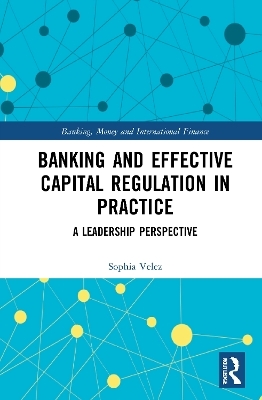
Banking and Effective Capital Regulation in Practice
Routledge (Verlag)
978-0-367-52361-9 (ISBN)
Due to a historical lack of attention to the importance of modelling, measuring and managing risk, senior bank leaders are struggling to implement unified practices within their financial institutions that could address the gaps posed by risky management behaviour, rogue trading, liquidity crises, prohibited investments in mortgage-backed securities, and default risks aligned with loans. This book discusses the theories at play between bank agents (bank managers) and their principals (shareholders), a topic which has gained importance as a result of the banking crisis, and similarly, governed the need for more efficient risk management and ethical managerial practices.
The author worked with a senior bank leadership team to identify and describe effective capital regulation practices that can lead to a reduction in loss and risky management behavioural practices. The book offers consensus on a number of activities that bank managers can implement to address bank risk. It analyses the relevant factors that determine the necessity for banking regulation and the important role of regulation in managing banking crises. The author’s analysis of the important regulatory aspects in developed countries such as the US, offers a useful conceptual framework for creating an adequate banking regulatory environment in developing countries.
This book offers an original contribution to the field of banking that undergraduate, masters, PhD students, academics and researchers can use to gain a deeper understanding of the constructs at play in the banking industry.
Sophia Velez has over 16 years of experience as a Certified Public Accountant (CPA), providing consulting services to large banks.
Part 1: Mega Banks Significant Losses 1: Losses of Mega Banks and Economic Impact 2: Bank Managers Practices and Significant Losses 3: Risky Management Practices and Principal Theory 4: Risky Management Practices and Goal Theory 5: OCEG Standards Part 2: Government Regulations and Compliance Environment 6: Dodd-Frank Bill 2010 and Regulatory Environment 7: Risk Management Efforts and Excessive Risk Taking 8: Governance and Monetary Policy 9: CCAR and DFAST Testing 10: Bank Manager’s Failed CCAR and DFAST Efforts Part 3: Bank Leadership Consensus on Capital Regulation Practices 11: Understanding Capital Regulation Challenges 12: Risk Appetite, Capital Structure, Stress Test and Governance 13: Risky Identification and Communication 14: Timely Reporting 15: Assurance Functions 16: Compliance Analytics 17: Comprehensive Risk Management Framework
| Erscheinungsdatum | 20.11.2020 |
|---|---|
| Reihe/Serie | Banking, Money and International Finance |
| Zusatzinfo | 34 Tables, black and white; 7 Line drawings, black and white; 7 Illustrations, black and white |
| Verlagsort | London |
| Sprache | englisch |
| Maße | 156 x 234 mm |
| Gewicht | 371 g |
| Themenwelt | Wirtschaft ► Betriebswirtschaft / Management ► Finanzierung |
| Betriebswirtschaft / Management ► Spezielle Betriebswirtschaftslehre ► Bankbetriebslehre | |
| Wirtschaft ► Betriebswirtschaft / Management ► Unternehmensführung / Management | |
| ISBN-10 | 0-367-52361-2 / 0367523612 |
| ISBN-13 | 978-0-367-52361-9 / 9780367523619 |
| Zustand | Neuware |
| Haben Sie eine Frage zum Produkt? |
aus dem Bereich


